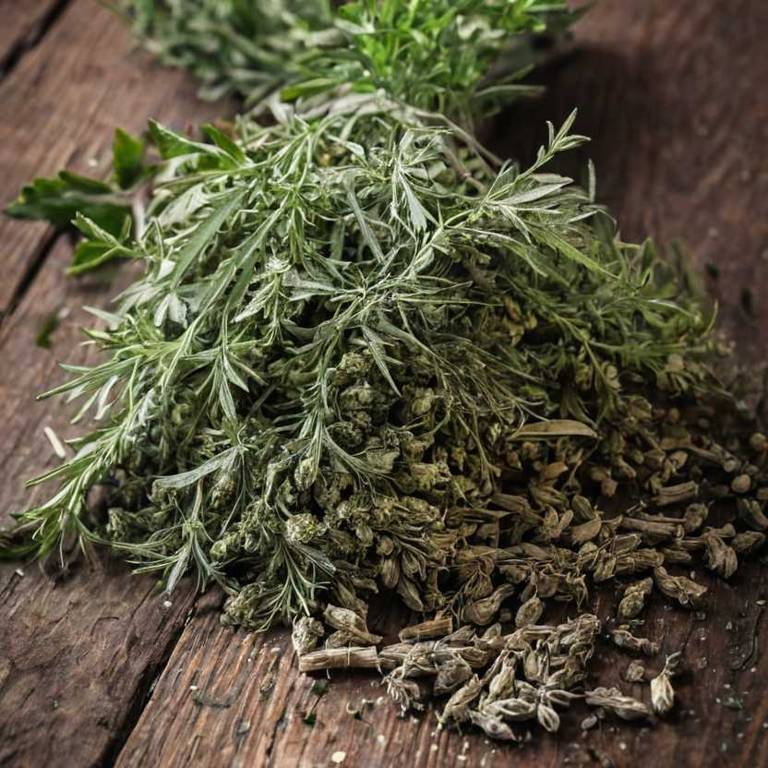10 Best Artemisia Annua Preparations

The best medicinal preparations of Artemisia annua are tinctures, teas, capsules, decoctions, and creams, each offering unique benefits for health and wellness.
Tinctures provide a concentrated dose of active compounds, while teas are a gentle and accessible way to consume the herb.
Capsules offer convenience and consistent dosing, making them ideal for daily use.
Decoctions involve simmering the herb to extract its medicinal properties, often used for digestive or immune support.
Creams are applied topically to address skin conditions and reduce inflammation, showcasing the versatility of Artemisia annua in traditional and modern medicine.
Below there's a list of the 10 best herbal preparations of artemisia annua for medicinal purposes.
- 1. Tinctures
- 2. Teas
- 3. Capsules
- 4. Decoctions
- 5. Creams
- 6. Oinments
- 7. Oils
- 8. Syrups
- 9. Lozenges
- 10. Liniments
1. Tinctures
Artemisia annua tinctures is commonly used to treat malaria and other parasitic infections due to their potent antimalarial properties.
These tinctures are also used to alleviate symptoms of fever, inflammation, and digestive disorders. The most common medicinal uses include treating malaria, fever, digestive issues, and as a natural remedy for parasitic infections. The bioactive constituents responsible for these effects include artemisinin, quercetin, and other flavonoids, which exhibit antiparasitic, anti-inflammatory, and antioxidant properties.
These compounds work by disrupting the life cycle of parasites and reducing inflammatory responses in the body.

2. Teas
Artemisia annua teas is commonly used to treat malaria and other parasitic infections due to its antimalarial properties.
This herbal preparation is also used to alleviate symptoms of fever, inflammation, and digestive issues. The most common medicinal uses include treating malaria, reducing fever, and supporting immune function. The bioactive constituents responsible for its medicinal properties include artemisinin, quercetin, and other flavonoids.
These compounds exhibit antiparasitic, anti-inflammatory, and antioxidant effects.

3. Capsules
Artemisia annua capsules is commonly used to treat malaria and other parasitic infections due to their potent antimalarial properties.
These capsules are also used for their anti-inflammatory, antimicrobial, and immune-boosting effects, making them beneficial for conditions like fever, infections, and digestive disorders. The primary bioactive constituent is artemisinin, a sesquiterpene lactone that exhibits strong antiparasitic activity. Other compounds such as flavonoids, terpenoids, and essential oils contribute to its therapeutic effects.
Overall, Artemisia annua capsules are valued for their ability to support the body's natural defenses against various ailments.

4. Decoctions
Artemisia annua decoctions is commonly used to treat malaria and other parasitic infections due to its potent antimalarial properties.
This herbal preparation is also used for its fever-reducing, anti-inflammatory, and immune-boosting effects. The most common ailments treated include malaria, fever, digestive issues, and respiratory infections. The bioactive constituents responsible for these medicinal properties include artemisinin, quercetin, and other flavonoids, which exhibit antiparasitic, antioxidant, and anti-inflammatory activities.
These compounds work by disrupting the life cycle of parasites and modulating the body's immune response.

5. Creams
Artemisia annua creams is commonly used to treat skin conditions and reduce inflammation.
These creams are often applied topically to address ailments such as eczema, psoriasis, and fungal infections. The most common medicinal uses include soothing irritated skin, reducing redness, and promoting healing. The bioactive constituents responsible for these effects include flavonoids, terpenoids, and essential oils, which have anti-inflammatory, antimicrobial, and antioxidant properties.
These compounds work together to enhance the skin's natural healing process and provide relief from various dermatological issues.

6. Oinments
Artemisia annua oinments is commonly used to treat malaria and other inflammatory conditions.
These ointments are often applied topically to reduce fever, relieve pain, and combat infections. The most common medicinal uses include treating malaria, skin infections, and inflammatory disorders such as arthritis. The bioactive constituents responsible for its medicinal properties include artemisinin, quercetin, and other flavonoids.
These compounds exhibit antimalarial, anti-inflammatory, and antimicrobial effects.

7. Oils
Artemisia annua oils is commonly used to treat parasitic infections, fever, and inflammation due to its potent antimicrobial and antipyretic properties.
The most common medicinal uses of this herbal preparation include the treatment of malaria, digestive disorders, and skin infections. It is also used in traditional medicine to alleviate symptoms of respiratory conditions and promote detoxification. The bioactive constituents responsible for its medicinal properties include artemisinin, quercetin, and various flavonoids, which exhibit antimalarial, anti-inflammatory, and antioxidant effects.
These compounds work synergistically to enhance the therapeutic benefits of the oil.

8. Syrups
Artemisia annua syrups is commonly used to treat malaria due to its potent antimalarial properties.
This herbal preparation is also used for its fever-reducing, anti-inflammatory, and immune-boosting effects. It is often employed in traditional medicine to address ailments such as fever, digestive issues, and respiratory infections. The bioactive constituents responsible for its medicinal properties include artemisinin, quercetin, and other flavonoids, which exhibit antiparasitic, antioxidant, and antimicrobial activities.
These compounds work synergistically to enhance the therapeutic benefits of the syrup.

9. Lozenges
Artemisia annua lozenges is commonly used to treat respiratory infections, including coughs, sore throats, and cold symptoms.
These lozenges are also utilized for their antipyretic properties to reduce fever and for their potential anti-inflammatory effects. The most common medicinal uses include alleviating symptoms of the common cold, influenza, and other viral infections. Additionally, they are sometimes used in traditional medicine to support immune function and combat parasitic infections.
The bioactive constituents responsible for these effects include artemisinin, a potent antimalarial compound, as well as other flavonoids, sesquiterpene lactones, and essential oils that contribute to their therapeutic properties.

10. Liniments
Artemisia annua liniments is commonly used to treat fever, inflammation, and skin conditions.
These liniments are often applied topically to alleviate symptoms of arthritis, muscle pain, and wounds. They are also used in traditional medicine to address digestive issues and respiratory infections. The bioactive constituents responsible for these effects include artemisinin, quercetin, and other flavonoids, which possess antimalarial, anti-inflammatory, and antimicrobial properties.
These compounds work synergistically to provide the therapeutic benefits associated with Artemisia annua.
